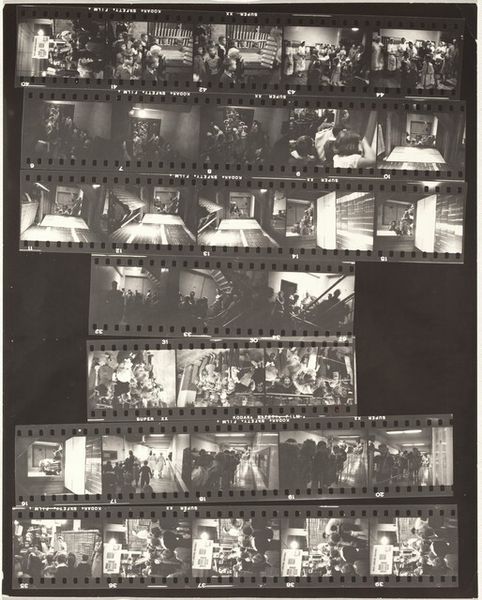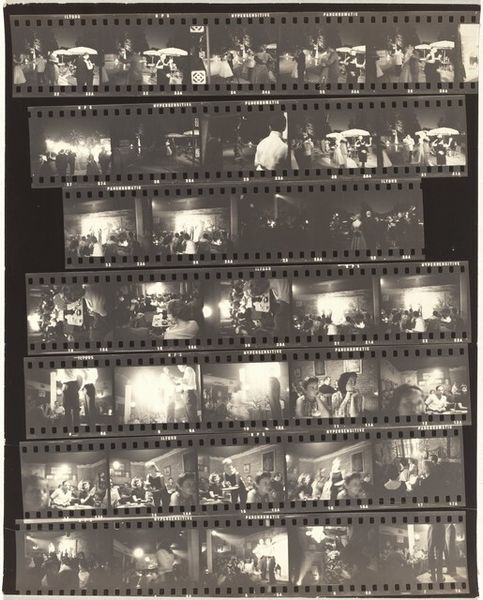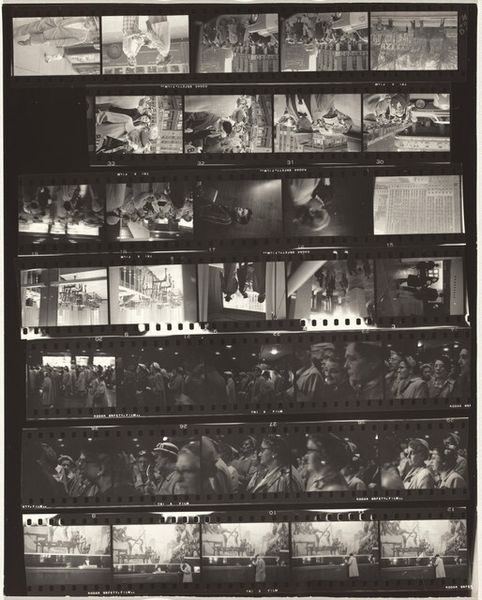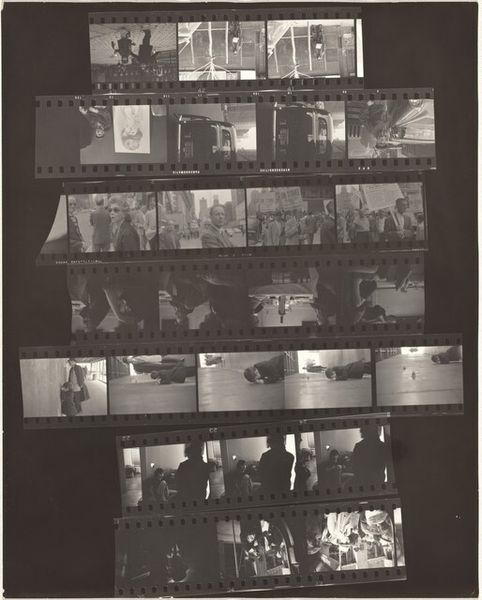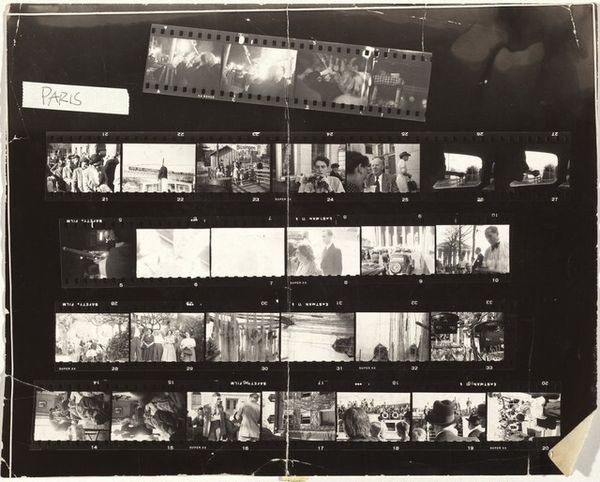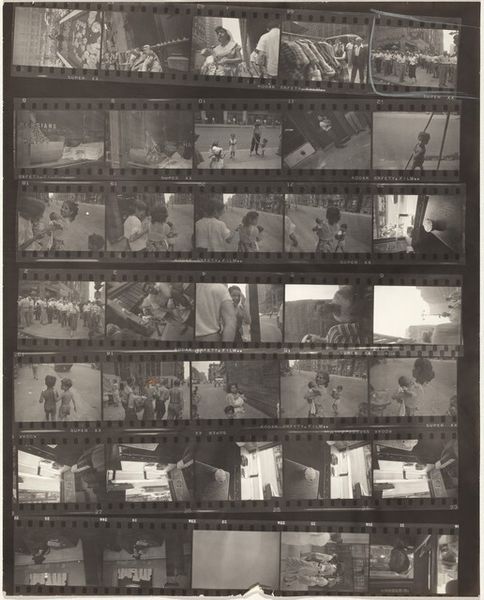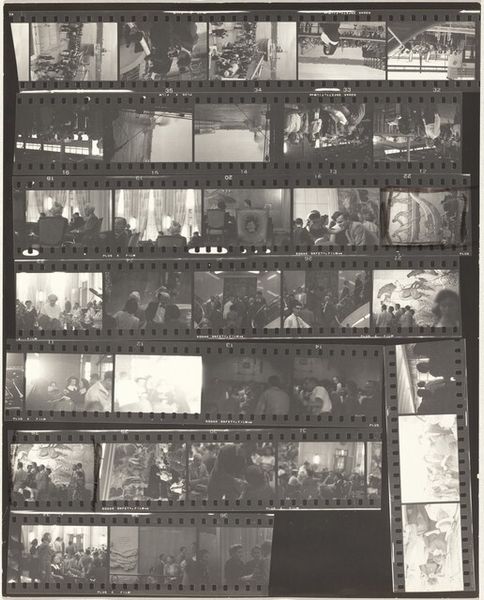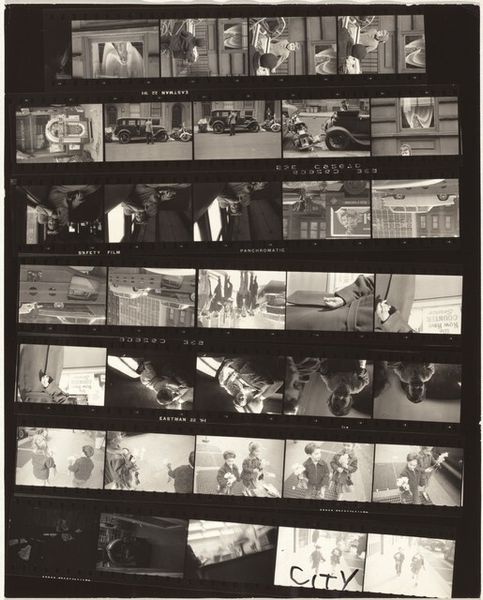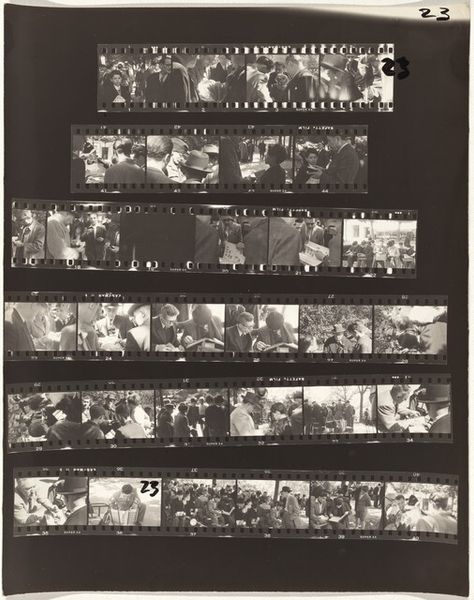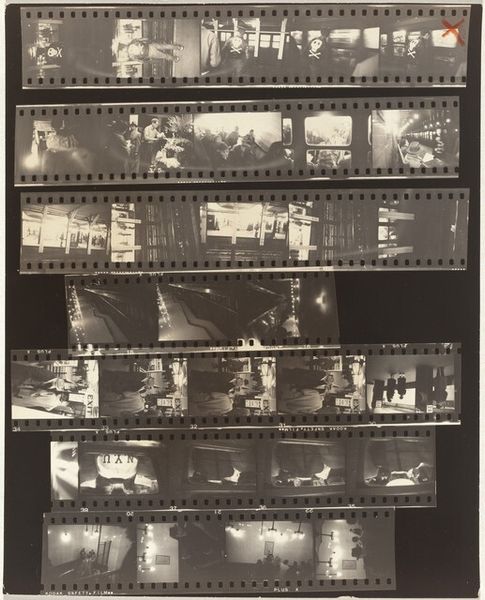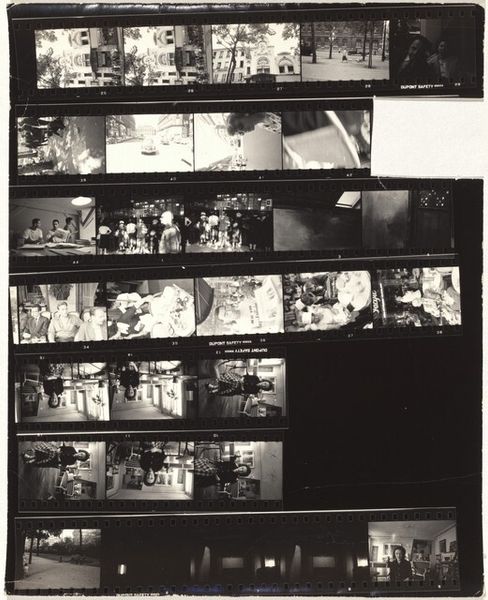
Dimensions: overall: 25.3 x 20.3 cm (9 15/16 x 8 in.)
Copyright: National Gallery of Art: CC0 1.0
Editor: This is "Guggenheim 45--Grosse Point, Michigan" by Robert Frank, made in 1955. It appears to be a collection of gelatin silver print film strips. The effect is almost like looking through a window into different scenes. What is your take on this as an art historian? Curator: Well, initially, this evokes the socio-political landscape of post-war America. Frank, though Swiss-American, captured aspects of American life that insiders often overlooked. How do you think presenting photographs as strips changes their meaning? Editor: It makes them feel fragmented, like moments ripped from a larger narrative. Was this intentional on Frank’s part? Curator: I think it’s key to Frank’s critique. By showing the "raw" film strips, Frank resists presenting a polished, idealized image of America. He displays snippets that are informal, hinting at unseen aspects of life. Editor: So, it's almost like he’s deconstructing the myth of the American dream? Curator: Precisely. And look at the subjects themselves: groups, social gatherings, candid moments. He highlights how social norms of the time shaped how people acted and presented themselves. Editor: It really shifts my understanding of documentary photography, making me question the photographer's role and intentions. Curator: Indeed. Instead of being a neutral observer, Frank is a social commentator, shaping our understanding of American identity and its complexities. Thinking about the political lens allows new meanings to appear.
Comments
No comments
Be the first to comment and join the conversation on the ultimate creative platform.

